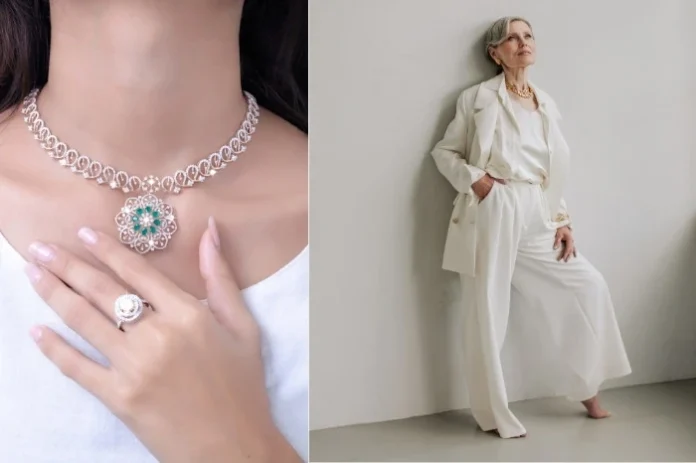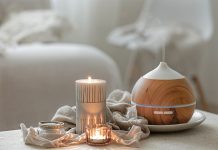Getting dressed is sometimes a puzzle. You have the shirt you love, the pants (embroided or simple jeans) jeansthat are just right, the shoes (loffers, sneakers or joggers) that do the trick, and still, something isn’t quite there. And then you introduce one little element: a watch with a bit of weight, a necklace you always grab, or the earrings you can always count on. And all of a sudden the entire outfit gels. That’s the power of one accessory.
It’s simple to get swept up in trends. Shops pressure us into more: more color, more novelty, more of whatever is trendy this week. Yet the individuals whose style remains in our heads hardly ever pile it on. They decide on one detail and allow that detail to carry the outfit. Jackie Kennedy and her pearls. Steve McQueen’s watch. Jane Birkin’s wicker basket. Their styles were successful because they weren’t trying too hard. It was effortless. They had a center, and all the rest fell into place.
Accessories also influence the way we feel, not only the way we appear. There’s this fashion psychology theory of enclothed cognition. Essentially, it states that what you’re wearing influences your mindset. If you’re wearing a necklace that holds a memory or a watch that has some meaning, your stance is different. Your words are more assertive. You project presence without even knowing it. That’s not vanity, that’s psychology at play.
One Good Choice Beats Five Mediocre Ones
Minimalism has been misconstrued. It is not about taking everything away; it is about selecting something good and holding on to it. One item can perform the work of five trendy ones. Consider it similar to punctuation in a sentence: one period concludes the thought. You do not require three exclamation points.
That’s why the ideal accessory can transcend situations. A simple leather watch doesn’t beg to be noticed but can hold its own in a meeting or at dinner. Gold hoops can be just as at home on a Saturday afternoon as they would be at a black-tie event. And, unlike those fast-fashion pieces that you throw away after one season, the ideal accessory only gets better with age.
Why Accessories Are More than Just Looks
Accessories are not merely decorative, they’re workhorses. Here’s how they do more than you think:
- Mood: A plain outfit is streamlined with one finished detail. You walk differently.
- Expression: A scarf, cuff, or ring conveys more about personality than words sometimes can.
- Versatility: A great accessory transcends wardrobes, weather, and moods.
- Sustainability: Purchasing fewer, better items reduces the churn of disposable fashion.
This is where the craftsmanship comes in. Knowing when to shop Tissot watches at Jomashop.com isn’t trend-following, it’s selecting something quality that becomes a part of your daily life.
Building Your Own Signature
Discovering your “signature” accessory need not be dramatic. Perhaps they are those shades you never leave home without. Or that leather-strap watch that keeps you anchored when timetables go awry. Whatever it is, what’s important is that it feels like you. Having discovered that, remember three things:
- Cohesion: Adhere to metals and materials that work together in harmony.
- Quality: Invest in items that will withstand wear and be stunning years down the line.
- Rotation: Less is more. Rotate a few solids so they don’t get stale.
Consider, for instance, a basic navy dress. On its own, it’s okay. Pair it with a fitted clutch and a single statement piece of jewelry, and the story changes. Same dress, new life. That’s what a signature piece will do.
Accessories With Memory
Most individuals are unaware of how intimate these decisions are. A pendant from a grandmother. A scarf discovered while traveling. A ring presented at graduation. These are not merely accessories, they are stories. When you wear them, you are bringing memory into the present.
This is where “dopamine dressing” enters the picture, a principle of dressing in things that bring you joy. When you dress in accessories that bring you joy, you don’t only look more appealing, you also feel more appealing. The outfit is no longer regarding presentation; it’s about connection.
First Impressions, Lasting Signals
Research informs us that individuals size each other up in less than seven seconds. And roughly 90% of it is visual. Accessories are part of that immediate read, as are grooming and posture. A deliberate choice telegraphs thoughtfulness. It communicates to people that you’re willing to go to the trouble. Many times, it’s perceived as competence and confidence.
That does not total dressing to impress anybody else. It’s about realizing that your clothes say a lot before you’ve uttered a word.
Daily Habits That Streamline
- Wear what you have: Favor a few old standbys on rotation over a drawer full of forgotten purchases.
- Consider flow: Pick something that can take you from one room to another.
- Opt for classics: A leather strap, gold hoops, or silk scarf sees you through the year.
- Care for your things: Polish, mend, clean. Longevity matters.
Accessories don’t demand constant reinvention. They demand care and attention. The more you look after them, the more they repay you.
Why Less Often Feels Like More
It’s tempting to continue pursuing the next shiny object. But style is not perpetual newness. It’s substance. The one thing you grab over and over again surpasses ornament, it becomes a part of you. A quality Tissot watch, an heirloom, a scarf purchased overseas, these sorts of things end up doing the talking without speaking.
Effortless elegance doesn’t mean effort-free. It means intentional. Choosing one piece that grounds you, day after day, is the simplest way to look, and feel, put together.
So tomorrow morning, when you’re staring at your closet, don’t get stuck in the spiral of “too much” or “not enough.” Just pick that one thing that feels right. Let it center everything else.





